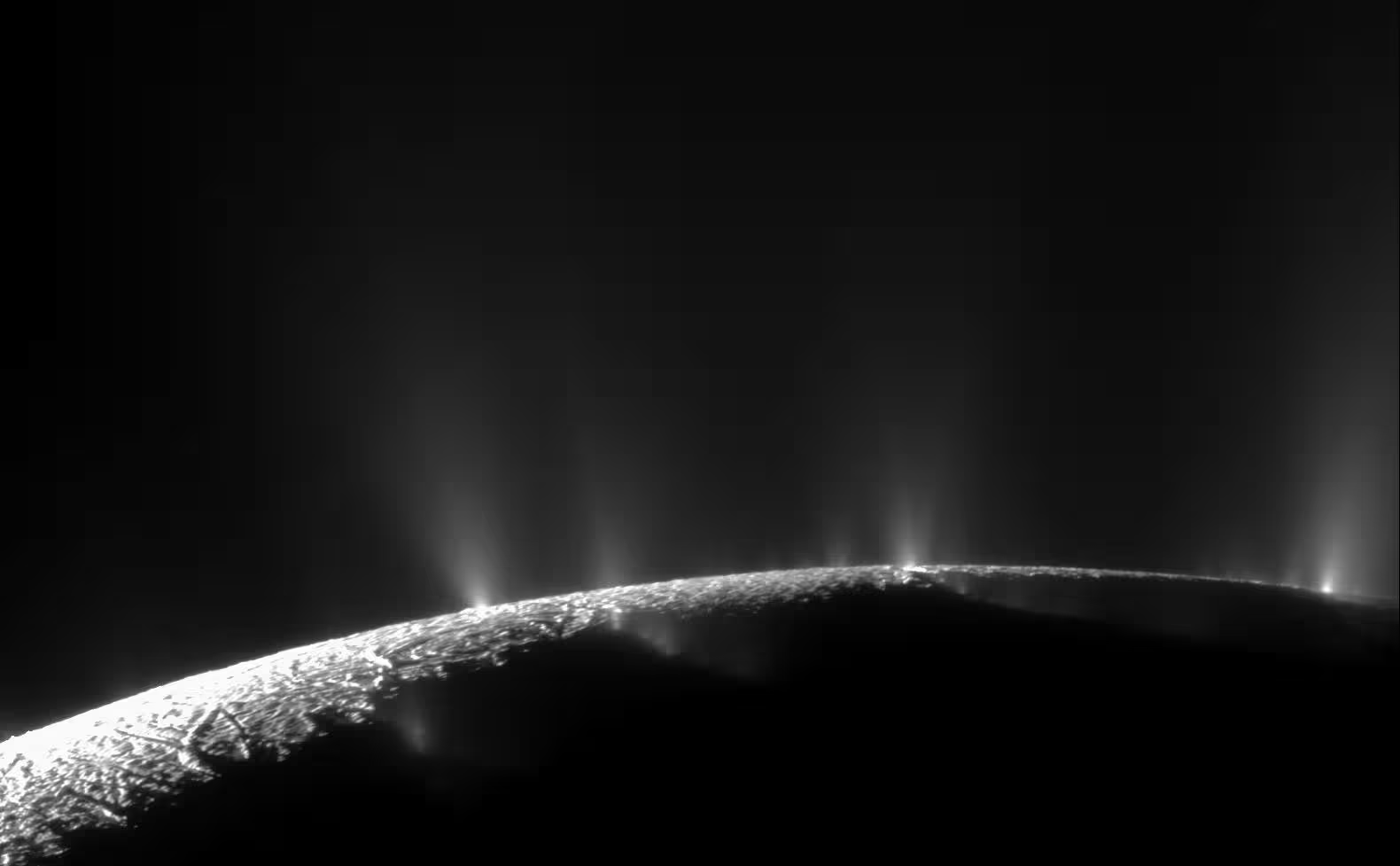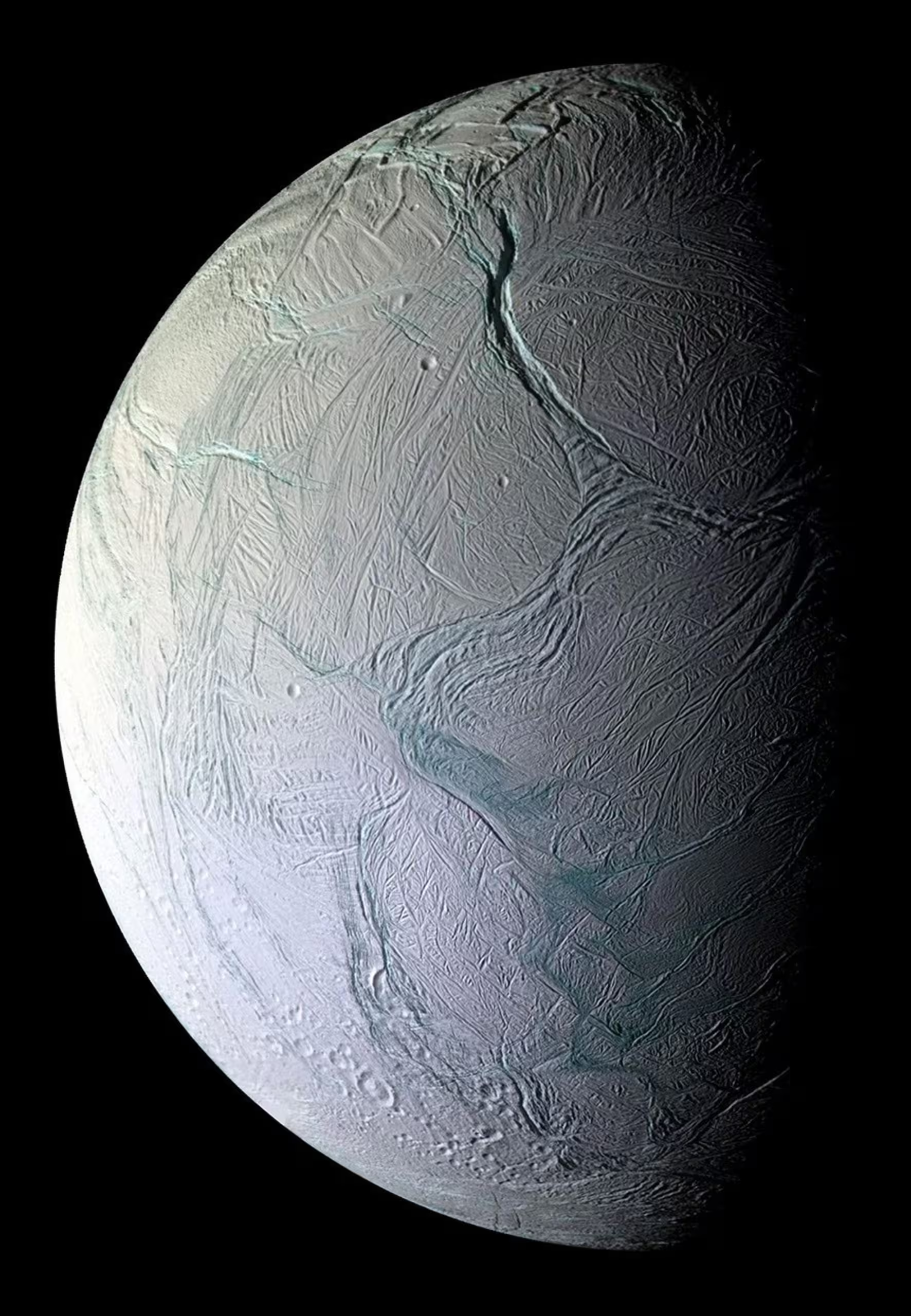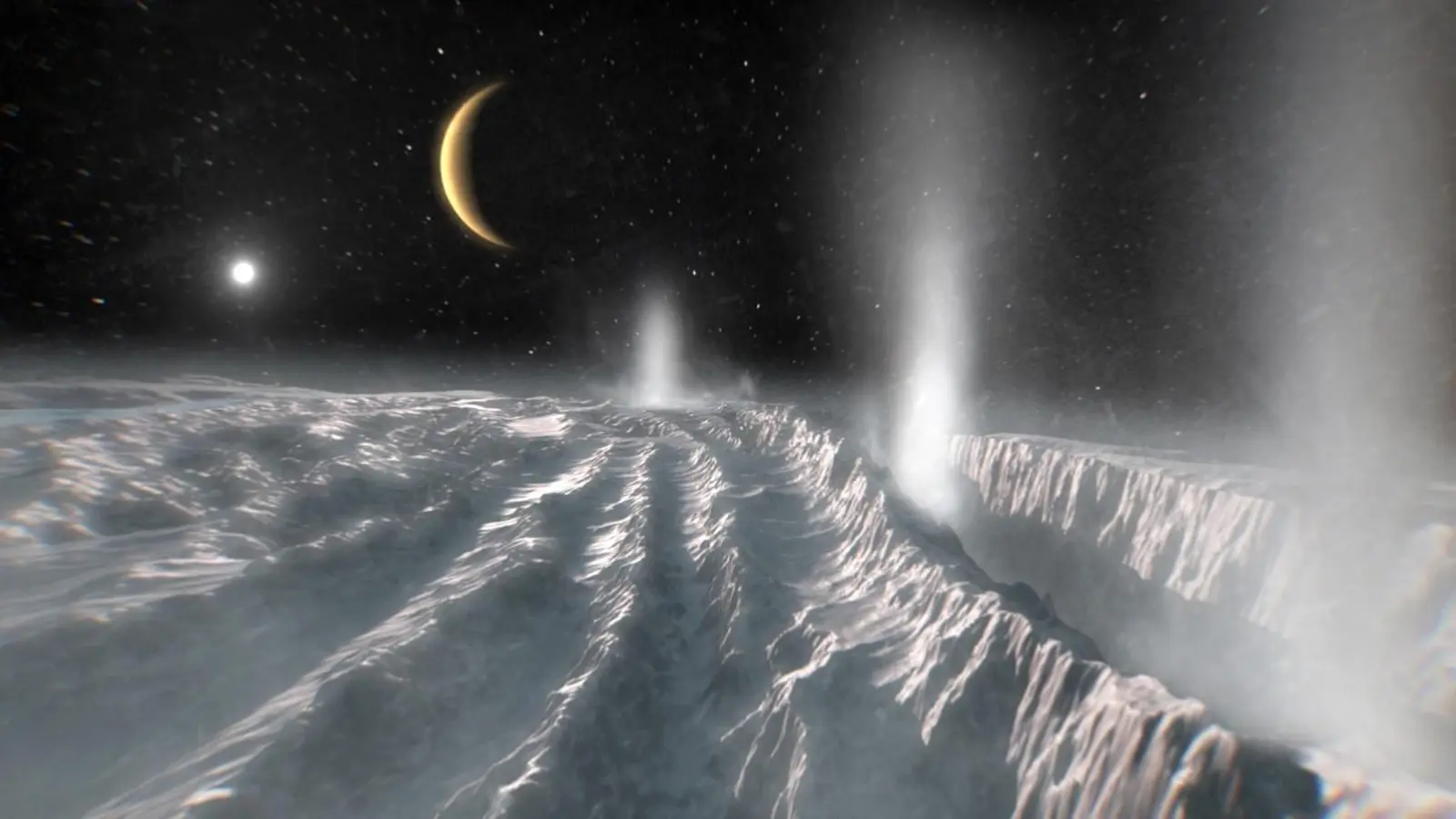6 Minute
Rezultate noi de laborator complică căutarea vieții pe Enceladus
Saturn’s icy moon Enceladus has been a prime target in the search for extraterrestrial habitability since NASA’s Cassini spacecraft discovered active plumes at the moon’s south pole. These geyser-like jets eject water vapor, ice grains, salts and a variety of organic molecules into space—materials that have been interpreted as potential signs of a nutrient-rich subsurface ocean. New experimental work presented at the EPSC–DPS2025 Joint Meeting in Helsinki suggests a significant caveat: some of the organics detected in the plumes might be formed by radiation-driven chemistry on the moon’s frozen surface, not imported from the hidden ocean below.
Cassini’s discovery and why organics matter

Enceladus’s plumes seen spraying up from the tiger stripes. Credit: NASA/JPL/Space Science Institute
Cassini first observed the dramatic plumes in 2005 emerging from linear fractures nicknamed "tiger stripes." Repeated fly-throughs allowed Cassini to sample plume composition directly, revealing salts, simple and complex organic molecules, and abundant water vapor. In aqueous environments, many of these compounds can act as precursors for prebiotic chemistry — the chemical pathways that can lead to amino acids, peptides and other building blocks of life. That made Enceladus one of the most promising locations in the Solar System for potential habitability.
However, interpreting plume chemistry as a direct window into the ocean requires caution. Molecules in the plume may originate in different reservoirs: the subsurface liquid, the cold surface ice, or chemical reactions occurring within the plume itself. Distinguishing between these sources is crucial to evaluating whether Enceladus’s ocean provides the sustained energy and chemistry necessary for life.
Laboratory simulations reproduce radiation-driven organics

Enceladus, imaged by the Cassini spacecraft. Credit: NASA
Dr. Grace Richards of the Istituto Nazionale di Astrofisica e Planetologia Spaziale (INAF) presented laboratory experiments showing that radiation can synthesize many organics previously attributed to the ocean. Using facilities at the HUN-REN Institute for Nuclear Research in Hungary, Richards and colleagues prepared ice mixtures representative of Enceladus’s surface and the walls of its tiger stripes: water, carbon dioxide, methane and ammonia, cooled to approximately -200 degrees Celsius. The team then bombarded these ices with ions—atoms or molecules missing one or more electrons—to mimic the charged-particle radiation trapped in Saturn’s magnetosphere.
Under those conditions the ice chemistry produced a suite of molecular species, including carbon monoxide, cyanate and ammonium, along with more complex precursors that can lead to amino acids. These products overlap in part with species observed both on Enceladus’s surface and in plume samples taken by Cassini. The experiments demonstrate a plausible in situ pathway for forming prebiotic molecules without requiring direct transport from the subsurface ocean.
"While the identification of complex organic molecules in Enceladus’s environment remains an important clue in assessing the moon’s habitability," Richards said, "the results demonstrate that radiation-driven chemistry on the surface and in the plumes could also create these molecules." Her remarks underscore a new interpretive challenge: organics detected in the plume do not automatically equate to ocean-derived biochemistry.
Implications for astrobiology and mission planning
Radiation chemistry is a well-known process on exposed ices throughout the outer Solar System: charged particles alter molecular bonds and can recombine simple species into more complex ones. On Enceladus, the magnetospheric environment of Saturn provides a steady flux of ions and electrons capable of driving such transformations at low temperatures. If plume organics are substantially produced or altered by surface radiation, then using plume composition alone to assess subsurface habitability becomes problematic.
The practical implication is that future missions must be designed to discriminate between surface-produced and ocean-sourced organics. That could involve combined strategies: high-resolution compositional mapping of the surface near tiger stripes, plume sampling at different altitudes and trajectories, isotopic measurements that can fingerprint formation pathways, and cryovolcanic context provided by imaging and thermal mapping. Proposed mission concepts discussed under ESA’s Voyage 2050 recommendations include targeted Enceladus orbiters or flyby missions that could provide the multi-pronged datasets needed to resolve these ambiguities.
Expert Insight
Dr. Leila Romero, an astrobiochemist at a university research center (fictional), comments: "These experiments are a valuable reminder that planetary environments are chemically active in more ways than one. Radiation processing can produce surprisingly complex organics in cold ice, so we need measurements that can tell us where a molecule was born — on the surface, in the plume, or in the ocean. Isotopic ratios, chemical context and spatial distribution will be key." Romero emphasizes that surface synthesis does not preclude a habitable ocean; rather, it complicates the diagnostic chain linking detected molecules to biological potential.
Conclusion
Laboratory experiments replicating Enceladus’s icy surface and radiation environment show that many organic molecules observed in plume and surface samples can form in situ through ion-driven chemistry. This finding does not rule out the habitability of Enceladus’s subsurface ocean, but it does require greater care when interpreting plume chemistry as evidence for ocean-derived prebiotic conditions. Resolving the origin of organics on Enceladus will demand integrated approaches in future missions: coordinated plume sampling, surface mapping, isotopic analysis and laboratory studies of low-temperature radiation chemistry. Only with that combined evidence can scientists confidently assess whether Enceladus’s hidden sea truly provides the conditions needed for life.
Sursa: scitechdaily


Comentarii